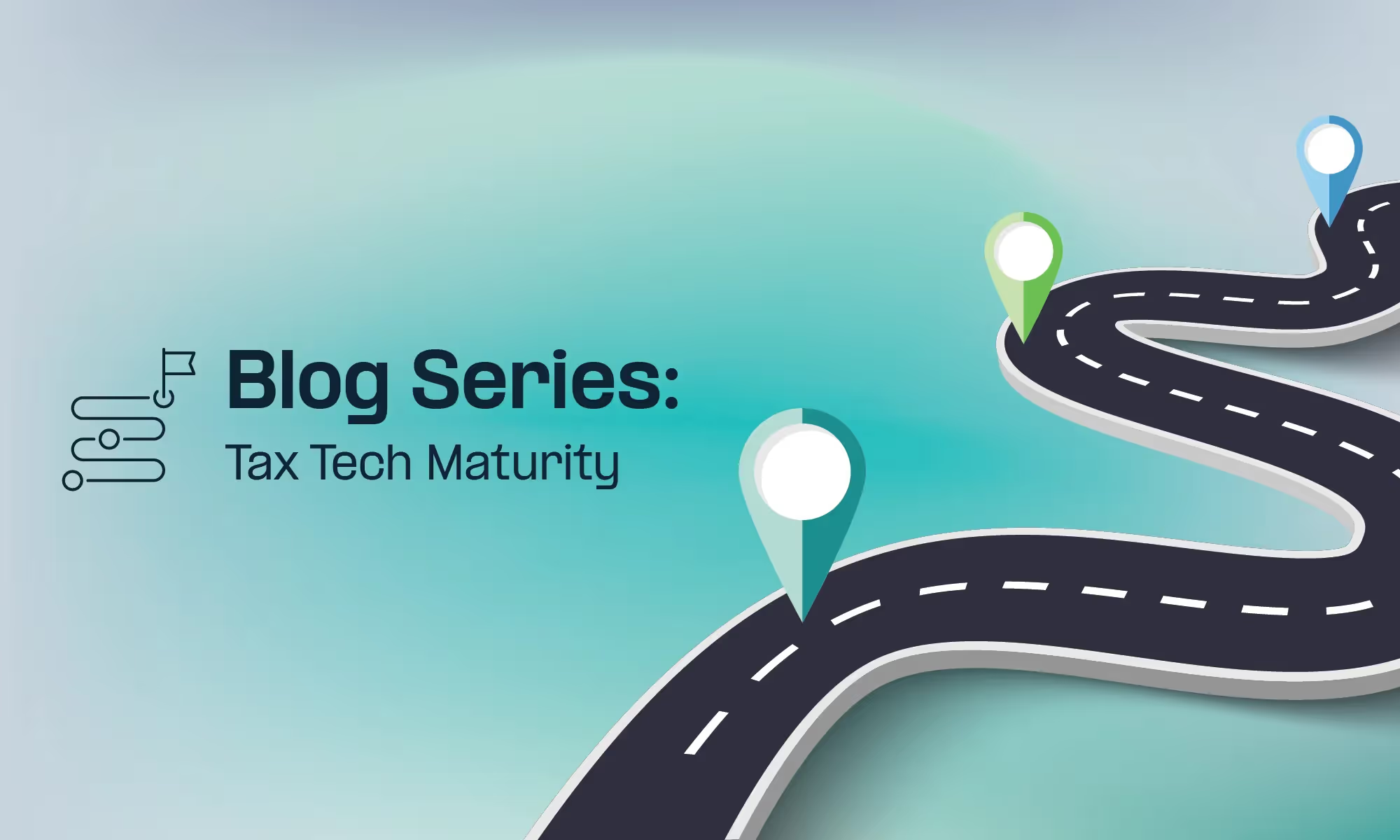Most enterprises know their tax operations could be better. But "better" is vague. Where exactly are you today? And more importantly, what does progress actually look like?
Tax leaders often describe their processes as "somewhat automated" or "good enough for now." But when governments mandate real-time e-invoicing, reject invoices for invalid tax IDs, or tighten VAT gap enforcement, "good enough" becomes a liability.
The truth is, tax maturity isn't binary. It's a journey with distinct stages, each defined by how organizations handle validation, VAT determination, compliance reporting, and e-invoicing. Understanding these stages helps you see not just where you are, but what's possible and what's holding you back.
Why most companies plateau
Here's the uncomfortable reality: most enterprises sit somewhere between Ad-Hoc and Developing. They've digitized parts of their tax function, but their processes remain fragmented across regions, systems, and teams.
They validate tax IDs sometimes, usually at onboarding, occasionally at filing time, but inconsistently. VAT rates are mostly automated through ERP modules, but overrides are common. E-invoicing is handled where legally required, often through disconnected local tools. Compliance reporting involves exporting data, reconciling spreadsheets, and preparing returns under time pressure.
Sound familiar?
The plateau happens because partial digitization creates a false sense of progress. Things are better than they were, so the urgency to go further diminishes. Meanwhile, the hidden costs accumulate: blocked invoices, delayed revenue recognition, audit exposure, and manual workload that scales linearly with growth.
Let's break down all five stages so you can see exactly where you stand—and what's next.
Stage 1: Ad-Hoc (Manual, reactive, and fragmented)
The reality: Tax processes are fragmented and rely heavily on individual knowledge. Spreadsheets, email, and manual lookups are the primary tools.
What this looks like in practice:
- Tax ID validation happens occasionally, without structure or audit trails
- VAT is calculated manually or with basic lookups, creating errors that flow into invoices
- Compliance reporting means exporting data from multiple systems and preparing returns by hand, often right before deadlines
- E-invoicing is patchy—handled locally where mandated but disconnected from enterprise systems
- Mistakes are discovered late: during audits, payment disputes, or when invoices get rejected
The cost: High risk, constant firefighting, and limited scalability. Every new market adds manual overhead.
Example scenario: A supplier onboards without tax ID validation. Six months later, during VAT return preparation, the finance team discovers the ID is invalid. Now they're chasing the supplier, can't claim input VAT, and face potential penalties.
Stage 2: Developing (Some automation, but still reliant on workarounds)
The reality: Core processes are embedded into ERP or finance systems, and basic automation takes hold. This is where many enterprises sit today.
What this looks like in practice:
- Tax ID validation is triggered at key moments—onboarding, filing time—but inconsistently across jurisdictions
- VAT calculation engines or ERP tax modules replace manual rate lookups, reducing errors but still requiring frequent overrides
- Compliance software helps prepare returns in some markets, while others remain manual
- E-invoicing is introduced where mandated (Italy, Brazil, Mexico) but through standalone solutions
- Processes are more efficient, but gaps remain: validations lack consistency, VAT rules aren't harmonized, compliance is fragmented by region
The cost: Better than Ad-Hoc, but still labor-intensive. Growth means more regional complexity, more tools, more exceptions.
Example scenario: Your company expands to Spain. E-invoicing is required, so IT implements a local solution. Three months later, you enter Poland with different requirements and another point solution. Now you have two systems, two integrations, and two sets of compliance rules to maintain.
Why companies get stuck here: Partial automation feels like progress, and each market solved individually seems pragmatic. But this approach doesn't scale, and it doesn't create the foundation for AI or advanced automation.
Stage 3: Established (Foundational tools in place, but gaps in scale or oversight)
The reality: Tax operations become standardized and embedded into core business workflows. This is where the foundation for true scale begins.
What this looks like in practice:
- Tax ID validation is integrated directly into transaction flows—supplier onboarding, invoicing, checkout—with audit trails automatically logged
- VAT determination runs through a central rules engine, applying correct rates consistently across all jurisdictions
- Compliance reporting becomes systematic: solutions consolidate data across markets to automate return preparation and provide audit-ready evidence
- E-invoicing is embedded into enterprise systems rather than managed through disconnected local tools
- The groundwork for a single platform approach emerges: consolidated processes, harmonized data, reduced regional fragmentation
The unlock: You stop managing tax market-by-market. Instead, processes run consistently, data quality improves, and audit readiness becomes continuous rather than panic-driven.
Example scenario: A new customer checks out on your marketplace. Their tax ID is validated instantly against government databases. The correct VAT rate applies automatically based on their location and product type. The invoice is formatted to local requirements and logged for compliance—all without manual intervention.
Stage 4: Transforming (Systems are connected, AI is emerging, and teams are proactive)
The reality: This is the inflection point. Tax becomes proactive, not reactive. Enterprises apply risk-based strategies and operate from a unified platform.
What this looks like in practice:
- Tax ID validation becomes dynamic: real-time checks in high-risk jurisdictions (Brazil, Slovakia), scheduled sweeps elsewhere
- VAT determination is fully automated and actively monitored, with dashboards highlighting anomalies before they affect reporting
- Compliance reporting is seamless: solutions connect directly to billing and procurement systems, preparing returns automatically with human intervention only for exceptions
- E-invoicing runs on a single global platform, replacing fragmented local tools and ensuring consistency across markets
- Audit evidence is available on demand: validations, filings, and records are instantly accessible
The unlock: Tax teams stop chasing errors and start managing risk. Compliance becomes predictable. New market entry accelerates because the infrastructure is already built.
Example scenario: Your compliance dashboard flags an unusual spike in zero-rated transactions in Germany. Investigation reveals a misconfigured product exemption. The issue is corrected before the VAT return is filed, avoiding penalties and preserving input VAT claims..
Stage 5: Leading (Tax is strategic, real-time, and fully embedded in operations)
The reality: Tax is no longer just compliant—it's intelligent. A single global platform covering validation, VAT determination, compliance, and e-invoicing becomes the foundation for AI.
What this looks like in practice:
- Tax ID validation becomes adaptive: AI identifies anomalies across millions of records and predicts where errors are most likely
- VAT determination evolves beyond static rules to intelligent engines that learn from transaction patterns and recommend corrections instantly
- Compliance reporting shifts to predictive intelligence: systems simulate obligations, forecast liabilities, and flag risks before deadlines
- E-invoicing becomes an intelligent network: AI predicts rejection risks, reconciles discrepancies automatically, and optimizes acceptance rates globally
- Tax transforms from reactive to strategic: faster market entry, support for innovative business models, stronger regulator relationships
The unlock: Tax becomes a competitive advantage. You move faster than competitors, take calculated risks with confidence, and build systems that improve themselves.
Example scenario: Your AI-driven tax platform spots a sudden rise in invoice rejections in Brazil. It cross-references recent regulatory data and detects a subtle update to reporting rules. Within minutes, it simulates the impact, identifies which historical transactions are affected, and auto-generates corrected filings. The system updates VAT logic globally to prevent recurrence and alerts local teams with a compliance summary. Before authorities issue any notice, you’ve remediated the issue, avoided penalties, and demonstrated proactive compliance.
Where do you actually sit?
Here's the difficult part: maturity is rarely uniform. Your VAT determination might be "Established" with consistent automation, while your e-invoicing remains "Developing" with local point solutions. Or your compliance reporting is "Transforming" but data validation is still "Ad-Hoc."
This uneven progress is normal. It reflects regulatory pressures (e-invoicing mandates force upgrades), investment cycles (ERP modernization projects), and organizational focus (compliance gets attention, validation doesn't).
But the gaps matter. An invoice can be perfect except for one invalid tax ID—and get rejected anyway. Advanced compliance reporting means nothing if the underlying data is unreliable.
The cost of standing still in today’s digital world
Companies plateau at Developing because partial digitization reduces the pain just enough to lower urgency. But the hidden costs compound:
Revenue delays: Invalid tax IDs block invoices, delaying payment cycles by weeks or months
Manual overhead: Each new market requires configuring new systems, training new people, and managing new exceptions
Audit exposure: Fragmented data makes audit preparation painful, extending cycles from days to months
Missed opportunities: Complex tax requirements slow market entry, making competitors who've solved this problem move faster
Scaling limits: Manual processes and regional tools mean growth requires linear increases in headcount
The real question isn't "are we better than we were?" It's "can our tax operations keep pace with our growth ambitions?"
Moving forward requires seeing clearly
Progress starts with honest assessment. Not just "where do we think we are?" but "where does the evidence say we are?"
That means looking at how validation actually happens across all your markets, not just where it's newest. How VAT determination performs under edge cases, not just standard transactions. Whether e-invoicing is truly integrated or just technically functional.
Most importantly, it means recognizing that maturity isn't about having the latest tools—it's about having connected, consistent, and scalable processes that work across your entire operation.
Want to know exactly where you stand? Take our 2-minute Tax Tech Maturity Assessment to get your personalized benchmark and see what "good" looks like for your specific situation.

















